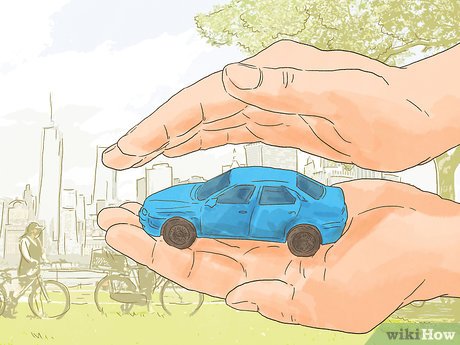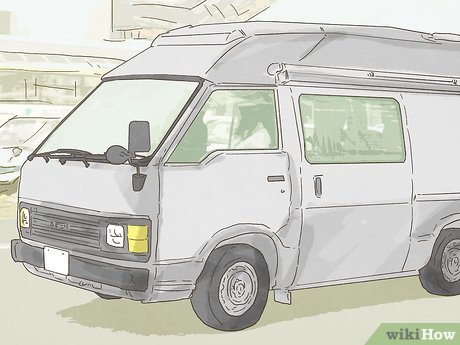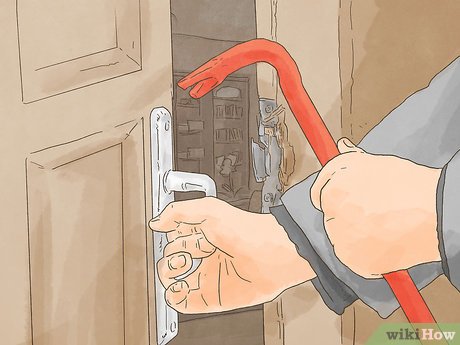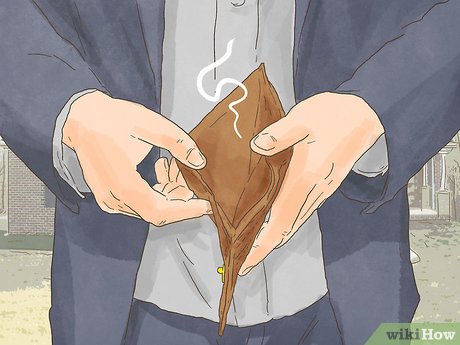How to Repossess a Car
Auto repossession is the process of taking back a vehicle that has not been paid for according to the terms of the vehicle lease or purchase agreement. Car companies usually have lawyers and established provisions that they follow in this...
Part 1 of 3:
Ensuring Your Rights as Creditor
-
 Have a valid written contract. Anyone who has seen 'The People's Court' or 'Judge Judy' has probably seen all kinds of oral agreements that get held up as contracts. However, the sale of an automobile must be in writing in order to be enforceable.[1][2]
Have a valid written contract. Anyone who has seen 'The People's Court' or 'Judge Judy' has probably seen all kinds of oral agreements that get held up as contracts. However, the sale of an automobile must be in writing in order to be enforceable.[1][2] -
 Create clear contract language. If you are the seller of the car, you are the one responsible for the language in the contract. If there are any terms in the contract that wind up being ambiguous, they will usually be ruled in favor of the buyer.[3] If you want to have the right to repossess the car in case of a default, make sure that your contract defines the following issues:
Create clear contract language. If you are the seller of the car, you are the one responsible for the language in the contract. If there are any terms in the contract that wind up being ambiguous, they will usually be ruled in favor of the buyer.[3] If you want to have the right to repossess the car in case of a default, make sure that your contract defines the following issues:- Default – just what is a 'default'? Do you want the right to repossess if the buyer is a day late with his or her payment? A week late? A month late? Be sure to specify.[4]
- Notice – If the buyer is late, will you issue a warning or notice of default before repossessing? In some states, you may have to, but in others you may not. Spell it out in the contract.[5]
- Grace Period – Will you allow a grace period for late payments? Many contracts will accept payments that are made within, for example, five to ten days late, but many do not. This is a point you need to discuss when signing the contract and make sure to include it in writing.
-
 Create a 'security interest.' A 'security interest' is what creates the collateral for your loan, and what gives you the right to repossess the property. In this case, the collateral is the car itself. Part of your sale contract needs to include language that creates a security interest in the car.
Create a 'security interest.' A 'security interest' is what creates the collateral for your loan, and what gives you the right to repossess the property. In this case, the collateral is the car itself. Part of your sale contract needs to include language that creates a security interest in the car. -
 Include a clear provision about repossession. Your contract needs to put the buyer on notice that failure to pay on time may lead to repossession. You will need to check with your state law to be sure that you use the proper language about creating a security interest, which is what gives you the right to repossess the property.[6]
Include a clear provision about repossession. Your contract needs to put the buyer on notice that failure to pay on time may lead to repossession. You will need to check with your state law to be sure that you use the proper language about creating a security interest, which is what gives you the right to repossess the property.[6]
Part 2 of 3:
Taking Steps to Repossess
-
 Locate the vehicle. If this was a private sale to a friend or neighbor, then locating the vehicle may not be a difficult process. On the other hand, it may take some work to hunt it down. When you do believe that you have found the vehicle, be absolutely certain that you have the actual car. Check the car's Vehicle Identification Number (VIN). You can usually find this on the dashboard, in the front left corner under the windshield. Check and make sure that it exactly matches the number on your title or contract for the sale.
Locate the vehicle. If this was a private sale to a friend or neighbor, then locating the vehicle may not be a difficult process. On the other hand, it may take some work to hunt it down. When you do believe that you have found the vehicle, be absolutely certain that you have the actual car. Check the car's Vehicle Identification Number (VIN). You can usually find this on the dashboard, in the front left corner under the windshield. Check and make sure that it exactly matches the number on your title or contract for the sale. -
 Gather your paperwork. When you go to take possession of the car, you will need to have the proof that you are entitled to it. This would include the original contract, the proof of payments that you have received and, by the absence, the ones you have not received. If you need the help of a police officer or a locksmith, for example, they will most certainly require this information.
Gather your paperwork. When you go to take possession of the car, you will need to have the proof that you are entitled to it. This would include the original contract, the proof of payments that you have received and, by the absence, the ones you have not received. If you need the help of a police officer or a locksmith, for example, they will most certainly require this information. -
 Take possession. You have a few choices when it comes to gaining entry into a car and removing it from the premises.
Take possession. You have a few choices when it comes to gaining entry into a car and removing it from the premises.- Use the key code to have a key made in advance. Many cars manufactured within the last six years have a key code that can be found on the title or by looking up the car's VIN. You can use this key code to have a key made for you.[7]
- Pick the car lock to get in. Slide a narrow metal rod through the window and into the door, then use it to pull up the door lock. You may also use a wire coat hanger bent to the correct shape.
- Tow the vehicle. You may opt to hire a towing company or tow the car yourself.
- Start the vehicle without a key. Use this method if you must gain entry into the car without having a key. There are other sources online with information about 'hot wiring' a car.
-
 Remove the car. Once you have taken possession, remove the car to a secure location where you can hold it until you resolve the issue of payment or sale. Be aware that once the car is in your possession, you become responsible for its condition. If the car gets damaged through your negligence, the debtor may actually have a legal claim against you for any loss in the car's value.
Remove the car. Once you have taken possession, remove the car to a secure location where you can hold it until you resolve the issue of payment or sale. Be aware that once the car is in your possession, you become responsible for its condition. If the car gets damaged through your negligence, the debtor may actually have a legal claim against you for any loss in the car's value.
Part 3 of 3:
Staying Within the Law
-
 Do not create a breach of peace. Nearly every state has a law that allows you to repossess a car as described here. Those laws also require that you are not allowed to 'breach the peace' to take the car.[8][9][10] A 'breach of peace' generally means that you may not:
Do not create a breach of peace. Nearly every state has a law that allows you to repossess a car as described here. Those laws also require that you are not allowed to 'breach the peace' to take the car.[8][9][10] A 'breach of peace' generally means that you may not:- Break into someone's house to get the keys, or into their locked garage to take the car. (There is some question about taking the car from a closed, but unlocked garage.)[11]
- Cause a fight or other physical altercation while taking the car. For example, if the owner/debtor notices what you are doing and tries to stop you, perhaps by standing in your way or blocking the car, you may not forcibly remove him in order to take the car.[12]
- Cause damage to the car or other property while in the act of repossessing the car.
-
 Limit the repossession to the car alone. You may have the right to repossess the car, but that does not give you the right to any additional property that is inside the car. For example, if the owner/debtor has expensive camera equipment in the back seat, you are responsible for returning that to him or at least notifying him how and when he can collect it. Otherwise, he could turn around and sue you for the value of that additional property.[13]
Limit the repossession to the car alone. You may have the right to repossess the car, but that does not give you the right to any additional property that is inside the car. For example, if the owner/debtor has expensive camera equipment in the back seat, you are responsible for returning that to him or at least notifying him how and when he can collect it. Otherwise, he could turn around and sue you for the value of that additional property.[13] -
 Allow the borrower the right to redeem his car. To 'redeem' means to pay off the amount that is owed and buy back the car. Most states allow the debtor this right.[14]
Allow the borrower the right to redeem his car. To 'redeem' means to pay off the amount that is owed and buy back the car. Most states allow the debtor this right.[14] -
 Conduct a 'commercially reasonable' sale. The purpose of repossessing a car is usually to re-sell it in order to collect the money that is owed on the loan. As the lender, you are required to conduct this sale in a 'commercially reasonable' manner. This means that you must advertise it fairly and conduct it at a place and time that is reasonable expected to bring a fair price.[15] You may not, for example, tell two of your friends that you will be holding an auction at 2:00 a.m. on Tuesday and consider that 'commercially reasonable.' It is up to you to sell the car for a fair price.
Conduct a 'commercially reasonable' sale. The purpose of repossessing a car is usually to re-sell it in order to collect the money that is owed on the loan. As the lender, you are required to conduct this sale in a 'commercially reasonable' manner. This means that you must advertise it fairly and conduct it at a place and time that is reasonable expected to bring a fair price.[15] You may not, for example, tell two of your friends that you will be holding an auction at 2:00 a.m. on Tuesday and consider that 'commercially reasonable.' It is up to you to sell the car for a fair price. -
 Keep accurate records. If you repossess a car, you are generally entitled to recover not only the full unpaid loan amount but also any costs of the repossession, advertisement of a sale, costs of hiring an auctioneer, etc. You must keep accurate records of all these costs and be able to show them if the debtor questions your figures.[16]
Keep accurate records. If you repossess a car, you are generally entitled to recover not only the full unpaid loan amount but also any costs of the repossession, advertisement of a sale, costs of hiring an auctioneer, etc. You must keep accurate records of all these costs and be able to show them if the debtor questions your figures.[16] -
 Return excess value from sale of car. If you are able to sell the car for an amount that is greater than the loan and the costs you incurred, you are required to return any remaining money to the debtor. You are only allowed to collect what you are actually owed – not more.[17]
Return excess value from sale of car. If you are able to sell the car for an amount that is greater than the loan and the costs you incurred, you are required to return any remaining money to the debtor. You are only allowed to collect what you are actually owed – not more.[17] -
 Beware of bankruptcy. If the debtor notifies you at any point in this process that he has filed bankruptcy, then your efforts to repossess the car must stop immediately.
Beware of bankruptcy. If the debtor notifies you at any point in this process that he has filed bankruptcy, then your efforts to repossess the car must stop immediately.- If you have not yet taken possession of the car, then do not go through with the repossession.
- If you have already taken possession of the car but have not yet sold it, then you should keep it secure until you are contacted by a representative of the Bankruptcy Court with further instructions.
- If you have advertised a sale but have not held it yet, you should stop and check with the bankruptcy trustee to find out if you may proceed with the sale.
- Any action you take after being notified of a bankruptcy case could be considered a violation of federal law on your part and could create serious problems for you.[18]
4.5 ★ | 2 Vote
You should read it
- How to Collect Car Repossession Deficiency
- How to Research a Topic
- How to Sell a Trailer
- How to Defend Yourself in a Car Repossession Deficiency Claim
- How to Write a Bill of Sale for an RV
- How to Cite a Blog in APA
- How to Quote in a Research Paper
- How to Conduct Academic Research
- How to Do Qualitative Research
- Source code for creating dangerous trojans are on sale!
- How to Publish a Research Paper
- How to Cite Videos



















 How to Collect Car Repossession Deficiency
How to Collect Car Repossession Deficiency Can Pokemon Go be played on a computer? The answer is yes!
Can Pokemon Go be played on a computer? The answer is yes! Summary - How to play Pokemon GO, virtual reality game catch Pokemon on smartphone
Summary - How to play Pokemon GO, virtual reality game catch Pokemon on smartphone Things you didn't know about 26 types of Pokeball - Part 2
Things you didn't know about 26 types of Pokeball - Part 2 Stardust's effective way in Pokemon GO
Stardust's effective way in Pokemon GO AZ word about eggs in Pokemon Go
AZ word about eggs in Pokemon Go